Formula C9H9N Boiling point 265 °C | Molar mass 131.1744 g/mol Appearance White crystalline solid | |
 | ||
Skatole or 3-methylindole is a mildly toxic white crystalline organic compound belonging to the indole family. It occurs naturally in feces (it is produced from tryptophan in the mammalian digestive tract) and coal tar and has a strong fecal odor. In low concentrations, it has a flowery smell and is found in several flowers and essential oils, including those of orange blossoms, jasmine, and Ziziphus mauritiana. It is used as a fragrance and fixative in many perfumes and as an aroma compound. Its name is derived from the Greek root skato- meaning "dung". Skatole was discovered in 1877 by the German physician Ludwig Brieger (1849–1919). Skatole is also used by U.S. military in its non-lethal weaponry; specifically, malodorants.
Contents
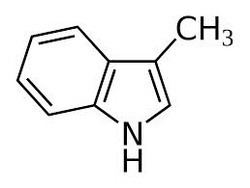
Chemical properties
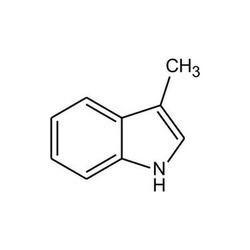
Skatole can be found as a white crystalline or fine powder solid, and it browns upon aging. It is nitrogenous, and one of the rings is a pyrrole. It is soluble in alcohol and benzene, and it gives a violet color in potassium ferrocyanide (K4Fe(CN)6·3H2O) and sulfuric acid (H2SO4). Skatole has a double ring system that displays aromaticity. It is continuous (all atoms in the ring are sp2 hybridized), planar, and follows the 4n+2 rule because it has 10 π electrons. It can be synthesized through a Fischer indole synthesis, which was developed by Emil Fischer.
Insect attractant
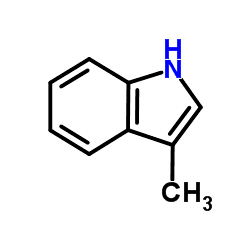
Skatole is one of many compounds that are attractive to males of various species of orchid bees, which apparently gather the chemical to synthesize pheromones; it is commonly used as bait to attract and collect these bees for study.
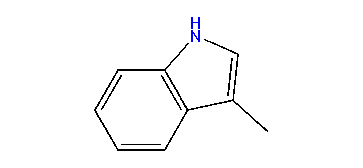
Skatole has been shown to be an attractant to gravid mosquitoes in both field and laboratory conditions. Because this compound is present in feces, it is found in combined sewage overflows (CSO) as streams and lakes containing CSO water have untreated human and industrial waste. Knowledge of this attractant makes CSO sites of particular interest when studying mosquito-borne diseases such as West Nile virus.
Safety
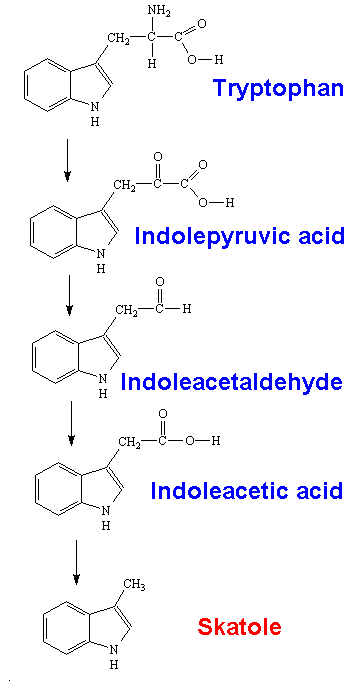
Skatole has been shown to cause pulmonary edema in goats, sheep, rats, and some strains of mice. It appears to selectively target club cells, which are the major site of cytochrome P450 enzymes in the lungs. These enzymes convert skatole to a reactive intermediate, 3-methyleneindolenine, which damages cells by forming protein adducts (see fog fever).
Application
Skatole is used as the starting material in the synthesis of atiprosin.
